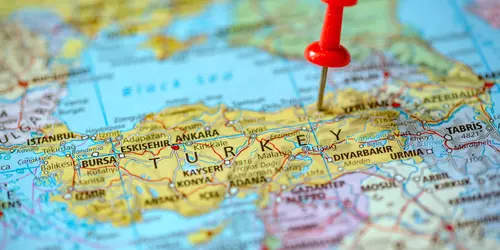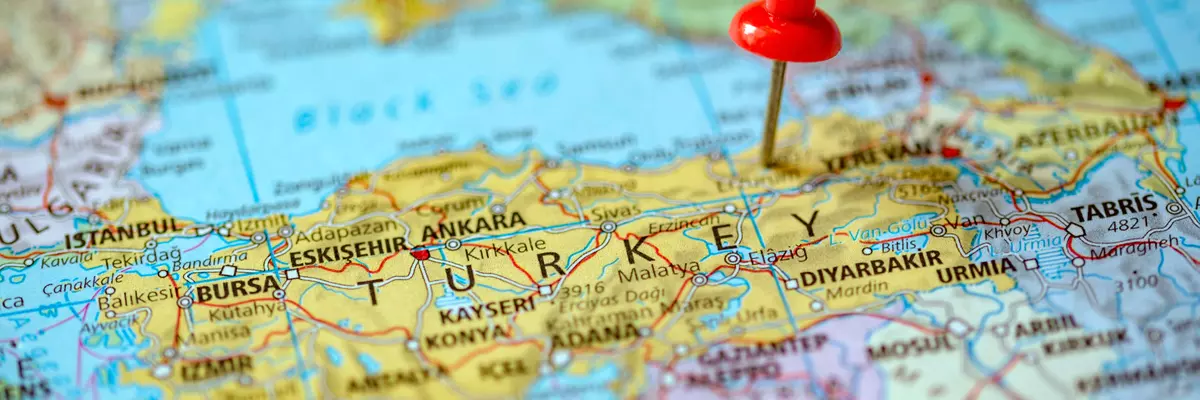The climate year of Turkey
Turkey lies with 3% of its area in Europe (Eastern Thrace) and with 97% (Anatolia) in Asia. In the west the Aegean Sea borders on Turkey, in the south the Mediterranean Sea and in the north the Black Sea and possesses thereby approx. 7200 km coast line. Geographically, Turkey is divided into seven areas: Marmara, Aegean, Black Sea, Mediterranean, Central Anatolia and Eastern and Southeastern Anatolia, which differ greatly in temperatures. On the Bosphorus lies Istanbul as the metropolis of Turkey, the region is hilly and covered with forests. Thrace is located west of the Bosphorus on the European side and forms with the river Meric the border with Greece. East of the Bosphorus is the Marmara region, the Aegean region along the west coast between Çanakkale and Bodrum. The northern coastal strip is the Black Sea region, the central Anatolian region consists of the plateaus and in eastern Anatolia are the high mountain landscapes and some of the highest mountains in Turkey. The Southeast Anatolia region is surrounded by the Taurus Mountains and is the oldest inhabited region in Turkey.
General information about Turkey
Worth seeing is the landscape of Cappadocia, which has been designated a World Heritage Site by UNESCO. Here the Cappadocians were looking for a way to practice their faith undisturbed, so they built their church down into the tuff rock, which is soft and therefore easy to work. The cave churches together with the "fairy chimneys", form a unique landscape. Volcanic eruptions, wind and weather formed the rock monuments called fairy chimneys, some of which rise into the sky like mushrooms. One of the seven wonders of the ancient world can be visited in Ephesus. The city used to be located directly on the sea, but today it has moved inland as the coastline shifted more and more to the west. Pamukkale, a wonder of nature, consists of calf deposits and is the landmark of the region.
Tourism Turkey
Turkey's climate varies greatly due to its size and diversity. Istanbul on the Golden Horn has bright warm summers and humid winters. The best time to travel is between May and October. In the resort areas of Antalya, Side and Kemer, temperatures rise to 35 °C in July and it almost never rains during the summer months. Winters are mild with increasing precipitation. Rainfall is high in the Black Sea region with 1200 mm of rain per year. In the interior of Turkey with the capital Ankara (about 900 m above sea level) there is a dry continental climate with hot summers and cold winters, in which it usually also snows and subzero temperatures occur.







